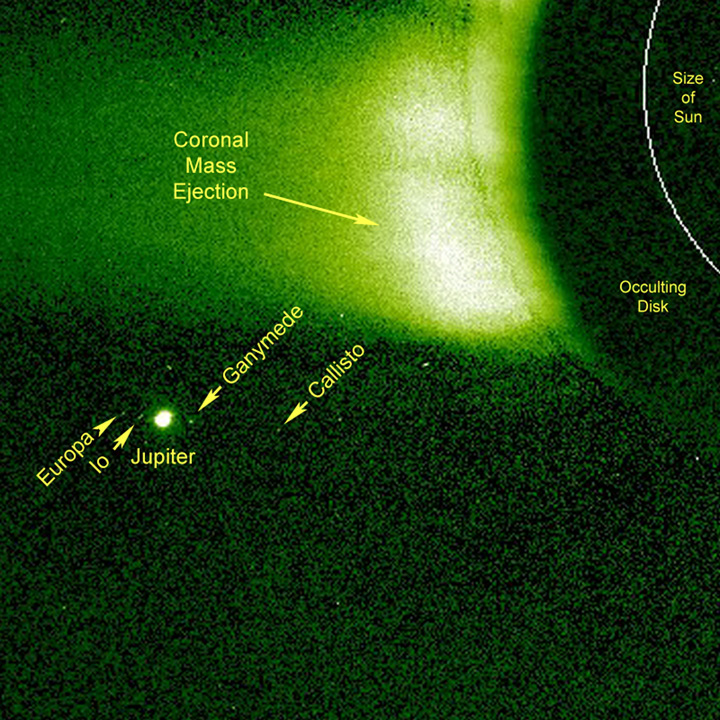|
Important notice about the deactivation of the STEREO ftp
server
Important notice about the STEREO redirects
Important notice about STEREO Behind
Jupiter and Galilean moons observed

No one has been able to observe Jupiter and its moons for some time as it is too close to the Sun, but that
did not stop the STEREO (Behind) COR1 coronagraph from capturing it and its four major moons over a 30-hour period (March 15-16, 2009).
If you look carefully, you can identify three of its moons close to Jupiter, and even discern how their positions change as the movie progresses.
Those with keen eyes can see the fourth moon, Callisto, as a fainter object well to the right of the others. These four moons are known as the
Galilean moons, because they were first discovered by Galileo Galilei in 1610. Jupiter itself is largely saturated in the movie, to bring out
the moons and the faint solar corona. The solid dark green area on the right is the coronagraph’s occulting disk that blocks out the Sun and
some of its bright atmosphere to that our instrument can see fainter structure just beyond the Sun. The thin, white line inside of that indicates
the actual size of the Sun. By coincidence, a coronal mass ejection is seen blasting a white cloud of charged particles out into space during much
of the clip. We have not seen many solar storms of late as the Sun is near its low point in its solar activity cycle.
Last Revised: October 03, 2023 17:04:35 UTC
Responsible NASA Official: 
Privacy Policy and Important Notices
Webmaster: Apexa Patel
|